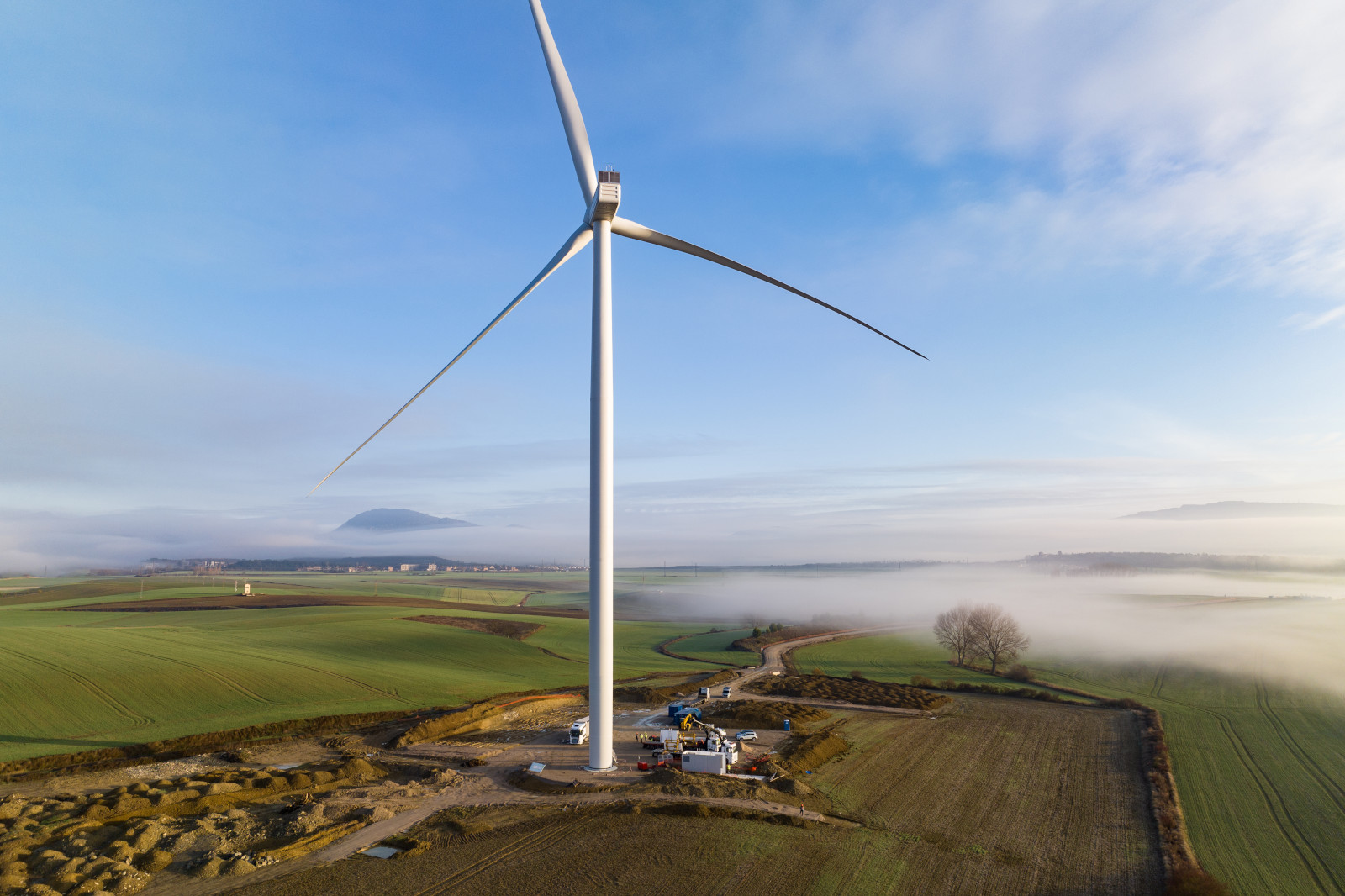Construction work has started: RWE is expanding its wind farm at Wiedenfelder Höhe
03.07.2025

RWE leads the way in promoting sustainability in wind power. Near Pamplona, Spain, the company has now commissioned its groundbreaking onshore wind project Orkoien. Over the last 14 months, RWE has constructed a 5.7-megawatt onshore wind turbine. At the same time it tested two innovative technologies to reduce environmental impact during the plant’s construction phase on the one hand and greenhouse gas emissions during its subsequent operation on the other. Both technologies have been implemented successfully.
Katja Wünschel, CEO RWE Renewables Europe & Australia: “More green electricity produced even more sustainably. That is what we are working towards. At Orkoien our team has shown what smart engineering solutions can achieve. We take these learnings and plan to apply them to other projects as well. This fits perfectly with our strong sustainable growth strategy, both here in our core market Spain and globally.”
Testing two new technologies
During the construction phase, special plastic mats were used for the first time in Spain. The great advantage they offer is that, in temporary work areas such as access roads and storage sites they minimise the construction-related impact on the soil. Normally, these areas are excavated and gravelled, but now, only the surface needs to be smoothed using the excavator. Then the access and storage areas are temporarily covered with the plastic overlays. Once the work is over, the vegetation can regenerate completely. Another advantage is that the mats, which are partly made of recycled material, can be reused in other projects.
Robert Navarro, President and CEO RWE Renewables Iberia: “The plastic mats surpassed our expectations. During the construction of Orkoien we faced harsh weather conditions with heavy rains and flooded soil. Nevertheless, we had secure access roads for the installation of the wind turbine. That is why the mats are now part of our construction toolbox for upcoming projects.”
The second technology, which has being used for the first time in the Orkoien pilot project, avoids the use of a greenhouse gas. In the medium-voltage switchgear at the base of the turbine tower, the use of an insulating agent in the circuit breaker is necessary to interrupt the electrical currents by cooling and extinguishing the arc that occurs when a circuit is opened. Until now, the gas SF6 (sulphur hexafluoride), which is neither toxic nor flammable, has been used for this purpose. However, SF6 is a greenhouse gas that would impact the climate if it escaped into the environment. Therefore, it may only be used under strict conditions. With the use of “SF6-free switchgear”, RWE tested an alternative. This new technology relies 85 percent on dry air and 15 percent on C5 fluoroketones as an insulating agent. In addition to being environmentally friendly, the technology has the same technical reliability as SF6. RWE is thus also preparing for the SF6 ban announced by the EU for new plants from 2031.
RWE Renewables Iberia – a key driver of the Spanish energy transition
Orkoien further strengthens RWE’s onshore portfolio in Spain. The company now has onshore wind farms with a total capacity of around 500 MW in operation in the country. In addition, RWE is further growing its solar business – recently the company has commissioned three new solar farms Las Vaguadas, Casa Valdes and Puerta del Sol and has started construction on its 92 MWac Gazules project in Andalucia. After the commissioning of this project, RWE will operate a solar capacity of around 250 MWac in Spain.
Building on its long-established onshore and solar business, RWE is now keen to step into the Spanish offshore market together with its partner Ferrovial. The two partners plan to jointly develop, construct and operate floating offshore wind farms off the Spanish coast.
Pictures of Orkoien for media use are available at the RWE Media Centre (credit: RWE).